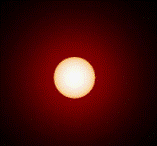Department of Physics and Astronomy: Publications and Other Research

Norman R. Simon Papers
Document Type
Article
Date of this Version
3-1-1992
Citation
The Astrophysical Journal, 387: 162-169, 1992 March 1.
Abstract
The horizontal-branch evolutionary tracks of Lee and Demarque (LD) are combined with the period/mean-density law of pulsation theory in an attempt to account for the observed periods and relative luminosities of 62 RR Lyrae stars in the extreme metal-poor globular cluster M15. These tests were performed for a number of assumed values for the mean luminosity of the M15 RR Lyrae sample and for different assumed boundaries for the pulsational instability strip. The results we obtained were contradictory in that no single set of models could account for all the RR Lyrae periods and luminosities while simultaneously reproducing the observed value for the ratio of blue to variable stars. The present detailed study thus agrees with the assertion by other authors that an RR Lyrae sample evolved near helium exhaustion along the LD tracks cannot explain the relatively large number of variable stars in M15. In addition, we find that this shortcoming remains even if the blue-variable ratio is assigned the generous value, robs = 3.8. For a main-sequence helium abundance Yms = 0.23, we show that the LD tracks corresponding to a largely unevolved RR Lyrae sample could reproduce the observed ratio, but still would not account for up to 15% of the stars. Furthermore, the mean mass of the RR Lyrae stars in this case, including that of the RRd stars, would be just under 0.90 M ʘ.


Comments
Copyright 1992 American Astronomical Society.